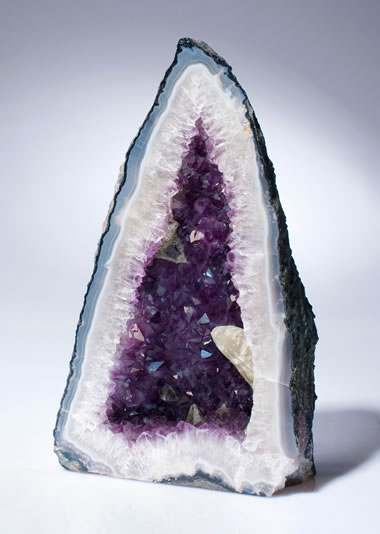
Rich purple amethyst, perfect white calcite crystals, and colorful banded agate are other common linings. Rare geodes can be filled with beautiful blue gem silica, pink rhodochrosite, spectacular opal with vivid play-of-color or other rare materials. Geodes range in size from under one centimeter to several meters in length. From the outside most geodes look like common rocks, but when they are opened the sight can be breathtaking.
Most geodes localities are in
A) stratified volcanic deposits such as basalts and tuffs; or
B) stratified sedimentary carbonate deposits such as limestones and dolomites.
A diversity of other environments yield a small number of geodes.

Volcanic Geodes: The most widely known and sought-after geodes are those that formed in areas of volcanic activity. Voids in basaltic lava flows often are infilled with agate, quartz, opal and other material delivered by hydrothermal water or groundwater. Some voids are spaces occupied by gases that failed to escape the lava flow before its surface crusted over.
